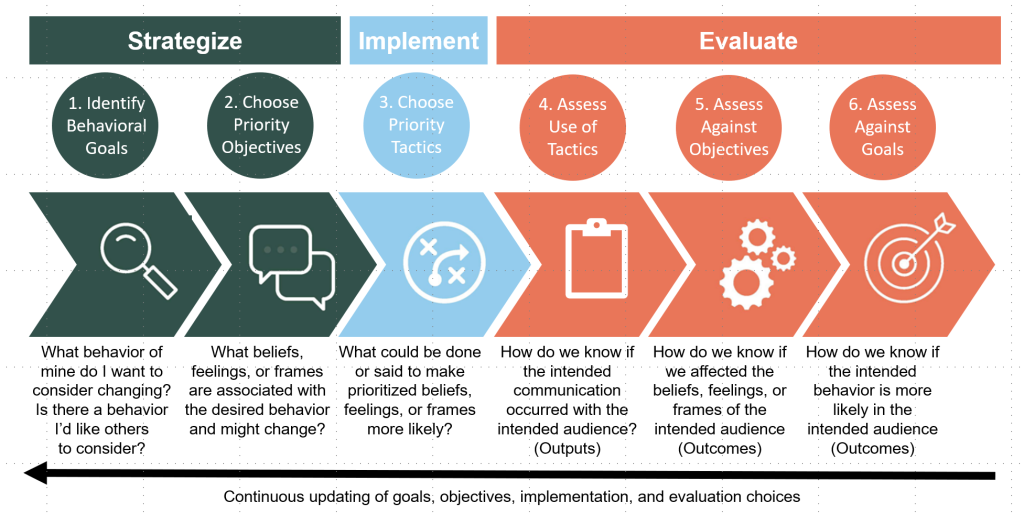The core idea behind our research is that science communicators will benefit if they think more carefully about what long-term behavioral goals they hope to achieve from the time, money, and other resources they put into communication. These goals might involve changing the behaviors of others or themselves.
Starting with concrete goals can then allow communicators to use social science-evidence to identify potential, near-term cognitive and affective communication objectives that would allow them to achieve their goals. These objectives include a range of beliefs (i.e., perceptions), feelings, and frames. Explicit identification of goals and objectives also enable evaluation.
We cannot rely on past goodwill and self-selected spokespeople for science to ensure that our communities turn to science when faced with challenging questions.

Or … perhaps it should look something like this newer ‘GOTTOG’ version that recognizes the importance of ensuring that planned tactics actually happened. If you say you’re going to devote 60 minutes to listening at a meeting, for example, then you can evaluate whether you really listened for 30+ minutes. As always, it’s important to remember that scientists can be an ‘audience’ during communication activities (i.e., true consultation).

